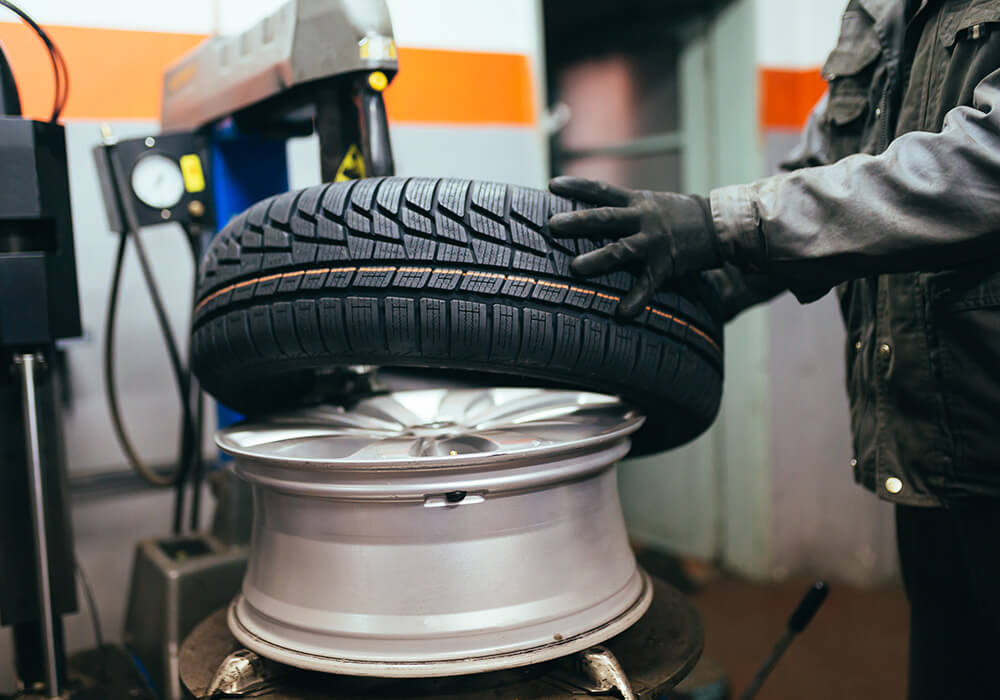Tire Repair Service Myths Debunked: Separating Truth From Fiction
In the world of auto upkeep, tire fixing holds a substantial area, yet it is often shrouded in myths and misconceptions that can lead to complication for automobile owners (morris tire service). From the false impressions bordering patching versus connecting a punctured tire to the efficiency of various tire sealers, there are a number of key locations where clarity is needed to make educated decisions.
Common Tire Repair Misconceptions
Dispelling widespread misunderstandings bordering tire repair is important for keeping roadway safety and prolonging the long life of your vehicle's tires. It is necessary to recognize that not all punctures are created equal; while some might without a doubt require a tire replacement, the majority can be safely fixed.
One more false impression is the concept that a do it yourself tire repair kit is a sufficient service for all tire problems. While these sets can be helpful for momentary repairs in emergency situations, they are not an irreversible remedy and might not resolve the underlying trouble (tire tracks morris il). Seeking the competence of a certified tire service technician is constantly suggested to guarantee the security and stability of the tire

Can You Fix a Punctured Tire?
Repairing a punctured tire is an usual practice in the automobile sector, often brought out by specialist technicians complying with details standards and standards. Leaks situated on the step area of the tire are normally repairable as lengthy as they are within a particular size limitation and do not impact the tire's architectural honesty.
It is necessary to note that pierces near the sidewall or shoulder of the tire are generally not repairable as a result of safety issues. Such areas go through substantial stress and anxiety and flexing, making repairs unreliable and potentially hazardous. In addition, if the slit is too large, exceeding the recommended repairable size, or if the tire shows signs of internal damage, it is safer to replace the tire altogether.
The Truth About Patching Vs. Plugging
When thinking about the repair service of a punctured tire, comprehending the differences between patching and plugging is essential for making informed choices pertaining to tire maintenance and safety and security. Patching entails repairing the tire from the within, where a patch is used to cover the puncture. This approach is considered even more trusted and long-lasting as it addresses the damages internally, lowering the risk of air leak and more tire damages. On the various other hand, plugging is a quick solution that involves placing a rubber link into the pierced location from the outside. While connecting is practical and can be done without eliminating the tire from the rim, it is usually thought about a short-term solution and might not supply the very same level of toughness as a spot.
Misconception: All Tire Sealers Are Effective

When choosing a tire sealant, think about elements such as the size of leaks it can efficiently repair, compatibility with tire pressure monitoring systems (TPMS), and whether it is secure for the tire product. Reviewing evaluations and seeking suggestions from professionals can help you make an informed choice. In addition, normal upkeep and timely replacement of sealer can aid make sure ideal efficiency. this content Remember, while tire sealers can be valuable in emergencies, they are not an alternative to proper tire care and upkeep.
Ideal Practices for Handling Flat Tires
Taking into account the varying effectiveness of tire sealers, recognizing best techniques for handling blowouts is vital for preserving road safety and security and vehicle efficiency. When encountering a blowout, the very first step is to securely pull over sideways of the road, far from oncoming website traffic. Switch on threat lights to notify various other chauffeurs of your scenario. It is recommended to use the hand brake and location wheel wedges under the tires to avoid the lorry from rolling. Next, consult your automobile's guidebook to locate the spare tire, jack, and lug wrench. Prior to trying to alter the tire, make sure that the area is level and secure. Loosen the lug nuts, increase the lorry with the jack, remove the lug nuts and blowout, and change it with the spare tire. Tighten up the lug nuts in a star pattern, lower the lorry, and firmly tighten the lug nuts. Stow away the flat tire, devices, and devices, and remember to inspect the extra tire's stress periodically. Following these finest methods can aid you deal with blowouts properly and securely.
Final Thought
To conclude, Go Here it is crucial to different reality from fiction when it pertains to tire repair service misconceptions. Comprehending the reality regarding official site patching vs. plugging, the effectiveness of tire sealers, and ideal practices for taking care of punctures can assist make certain the security and long life of your tires. By debunking typical misunderstandings and adhering to proper repair work standards, you can make informed decisions when it pertains to preserving the wellness of your car's tires.